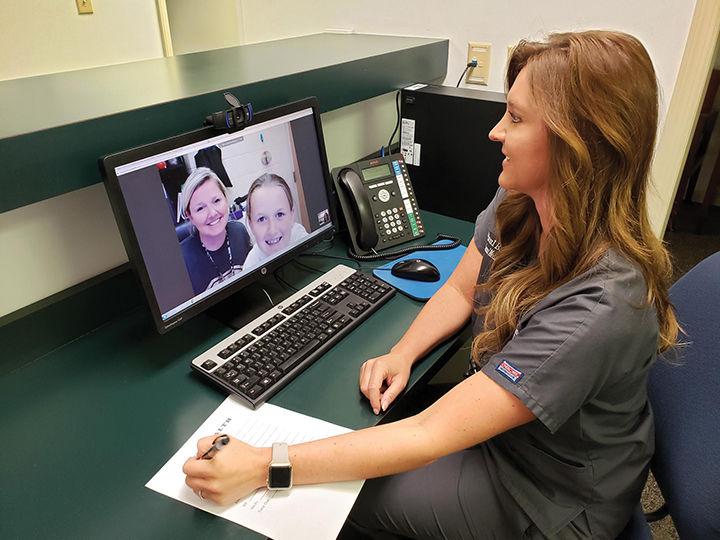COVID-19 may continue to spread in our community. Many healthcare organizations will have to limit the number of visitors during appointments. It might be difficult to make appointments to providers if there are multiple children in the household and not enough caregivers in the family to get children to medical or therapy appointments, while keeping siblings safely at home.
Telehealth bridges geography limitations and increases the access to providers. Whether it’s routine visits or addressing an urgent need, telehealth provides face-to-face interaction and enables therapists to deliver efficient & convenient care without the need of an in-office visit.
Missed appointments, failure to adhere to treatment plans and infrequent visits all contribute to sub-optimal outcomes for therapy patients. Video visits make it easier for patients to stay engaged in their treatment, receive regular care, and follow-up as instructed.
Common types of therapy provided with telemedicine
Behavioral Therapy and Mental Health Treatment
Telehealth is an effective way to monitor the mental health of patients, adjust medications, and conduct cognitive behavioral therapy or applied behavior analysis. Psychiatrists and other physicians are able to prescribe and manage medications without the need for in-office appointments.
Speech Therapy
Speech therapy requires one-on-one, personal interaction between the therapist and patient. Telemedicine using high-quality audio and video offers a welcome alternative to numerous in-office visits. It has been proven effective in treating patients at home as well as in school settings. The convenience of video visits increases the likelihood that patients will stick with their treatment plan and achieve the desired outcomes for therapy.
Occupational Therapy
Occupational therapists and their clients are perfectly positioned to benefit from the use of telehealth technologies to deliver health and wellness and habilitation services across multiple practice settings. Occupational therapy practitioners are using telehealth as a service delivery model to assist clients with developing skills, incorporating assistive technology and adaptive techniques, modifying work, home, or school environments, and creating health-promoting habits and routines.
Telehealth services are covered through private insurance and medicaid
 According to Centers for Medicare and Medicaid Services (CMS), distant site practitioners who can furnish and get payment for covered telehealth services (subject to State law) include:
According to Centers for Medicare and Medicaid Services (CMS), distant site practitioners who can furnish and get payment for covered telehealth services (subject to State law) include:
● Physicians
● Nurse practitioners (NPs)
● Physician assistants (PAs)
● Clinical psychologists (CPs) and clinical social workers (CSWs)


